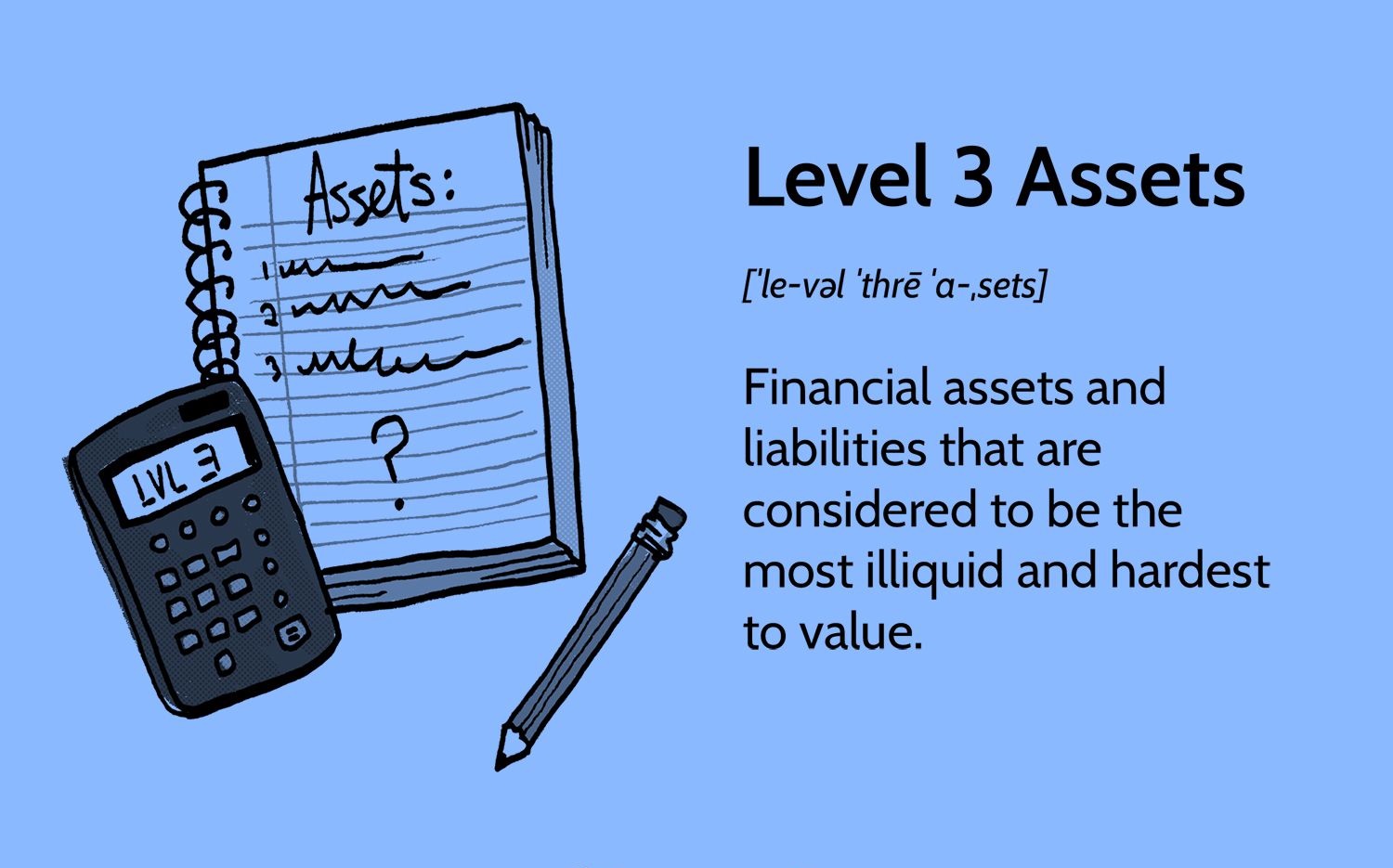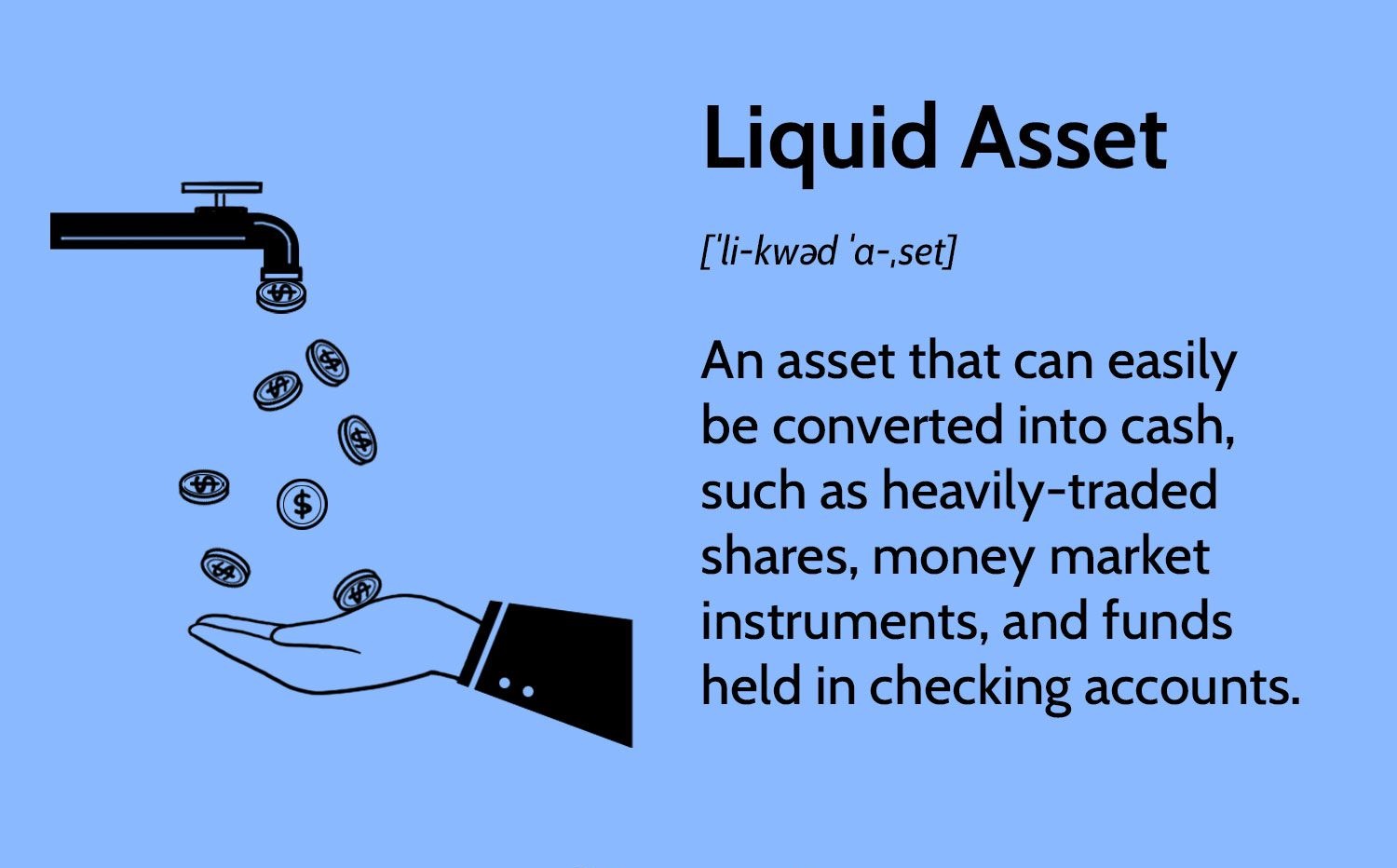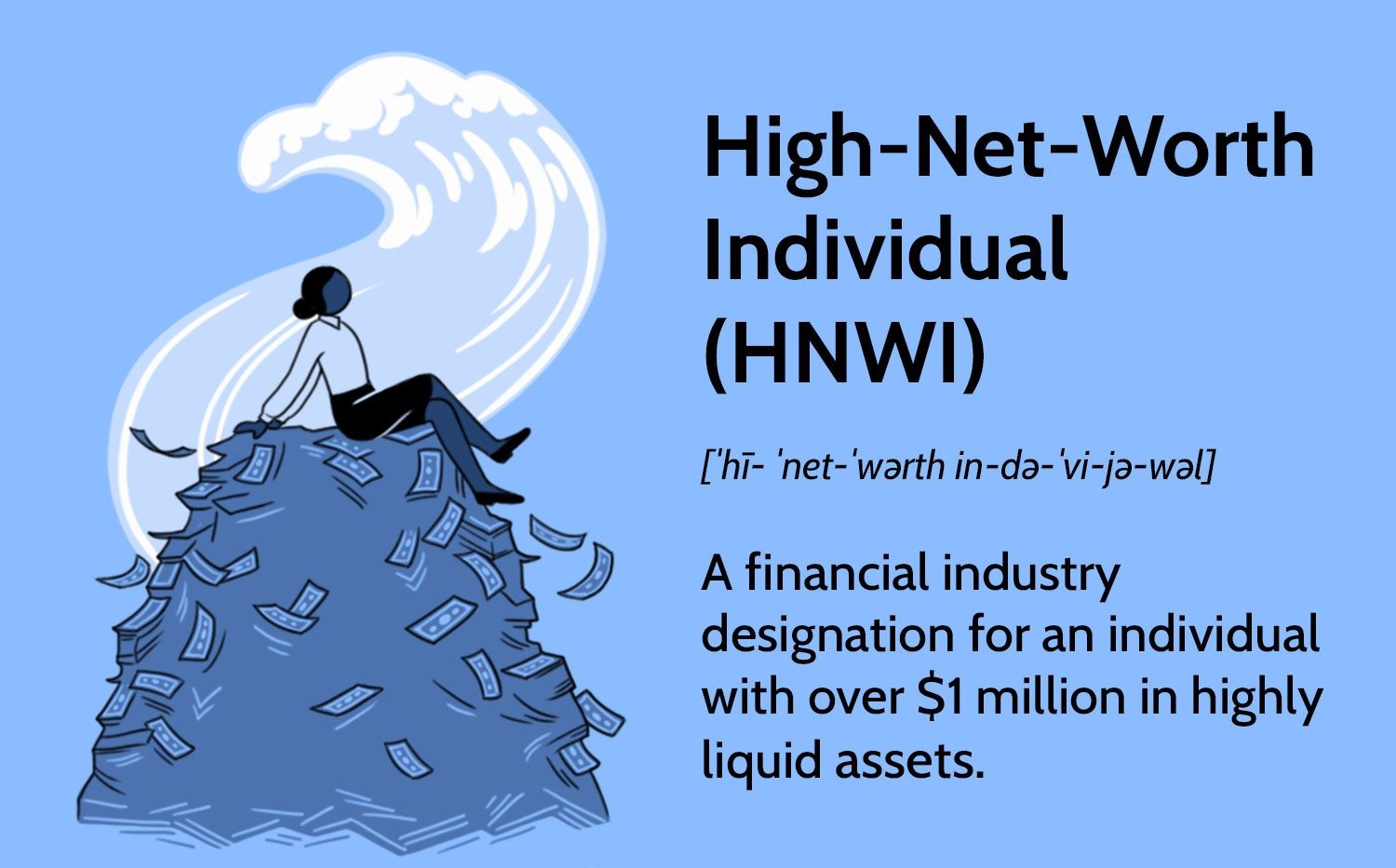Introduction
When it comes to investing, most people think of stocks, bonds, and real estate. These are considered liquid assets as they can be easily bought and sold in the market. However, there is another category of investments known as illiquid investments, which are not as commonly discussed but still have their own unique benefits and drawbacks.
Illiquid investments refer to assets that are not easily convertible into cash. Unlike liquid investments, illiquid investments require more time and effort to sell or transfer ownership. These assets typically have a lower level of market activity and are less frequently traded.
Illiquid investments can include a variety of assets such as private equity, venture capital, hedge funds, real estate partnerships, art, antiques, and collectibles. These types of investments often require a long-term commitment and are targeted towards investors looking to diversify their portfolio beyond traditional, liquid assets.
While illiquid investments may not be suitable for every investor, they offer certain advantages that can make them an appealing option for those willing to take on more risk and lock up their capital for an extended period of time.
In this article, we will explore the definition and characteristics of illiquid investments, discuss the advantages and disadvantages associated with these types of investments, provide examples of illiquid assets, and offer tips for investing in illiquid assets.
Definition of Illiquid Investments
Illiquid investments are assets that have limited liquidity or are not easily converted to cash. Unlike traditional assets such as publicly traded stocks and bonds that can be bought or sold quickly, illiquid assets require more time and effort to sell or transfer ownership. This is because there is a smaller pool of potential buyers and sellers, and transactions may involve complex agreements or processes.
Illiquid investments are often characterized by a lack of active market trading. This means that there may not be a readily available market where an investor can sell their investment at any given time. Instead, the sale of an illiquid investment typically requires finding a buyer through negotiation or private placement.
Illiquid investments can take various forms, including:
- Private equity: Investing in privately held companies that are not listed on a public stock exchange.
- Venture capital: Financing provided to early-stage or high-growth companies in exchange for an ownership stake.
- Hedge funds: Private investment funds that pool capital from accredited investors and employ various investment strategies.
- Real estate partnerships: Investing in real estate properties or development projects through a partnership structure.
- Art, antiques, and collectibles: Investments in valuable items such as paintings, sculptures, rare coins, or vintage cars.
Illiquid investments offer the potential for higher returns compared to more liquid assets, but they also come with increased risk and a longer investment horizon. The illiquidity of these assets means that investors should be prepared to hold their investment for an extended period before being able to cash out.
It is important for investors to understand the distinction between liquid and illiquid investments and consider their own investment goals, risk tolerance, and liquidity needs before venturing into the world of illiquid investments.
Characteristics of Illiquid Investments
Illiquid investments have several distinct characteristics that set them apart from more traditional liquid assets. Understanding these characteristics is essential for investors considering venturing into illiquid investments:
1. Limited Marketability: Illiquid assets have a smaller pool of potential buyers and sellers compared to liquid assets. This limited marketability can make it challenging to find a buyer or sell the investment when desired. As a result, investors should be prepared for longer holding periods and reduced flexibility in accessing their capital.
2. Longer Investment Horizon: Illiquid investments typically require a longer investment horizon. Unlike liquid assets that can be bought or sold at any time, illiquid assets often have lock-up periods or contractual agreements that restrict the investor’s ability to exit the investment for a certain period. This longer time frame is necessary for the investment to potentially generate returns and reach its full value.
3. Higher Potential Returns: In exchange for the increased risks and longer holding periods, illiquid investments offer the potential for higher returns. These investments often involve alternative asset classes that have the potential for significant capital appreciation over time. Additionally, illiquid investments may provide opportunities for investors to participate in unique investment strategies or gain exposure to niche markets.
4. Limited Valuation Transparency: Valuing illiquid investments can be challenging due to the lack of an actively traded market. Unlike liquid assets that have readily available market prices, illiquid investments may not have a defined market value. Valuation can depend on factors such as appraisal techniques, expert opinions, or negotiation between parties. This lack of valuation transparency adds complexity to the investment process and requires investors to perform thorough due diligence.
5. Higher Risk Profile: Illiquid investments generally come with increased risks compared to liquid assets. These risks can arise from factors such as market downturns, industry-specific risks, or the reliance on key individuals or companies. Additionally, the lack of liquidity can create challenges if unexpected financial needs arise, as selling illiquid investments quickly may not be feasible or result in desired proceeds.
Despite these characteristics, illiquid investments can play a valuable role in diversifying an investment portfolio and potentially delivering attractive returns over the long term. However, investors must carefully assess their risk tolerance, investment goals, and liquidity needs before allocating capital to illiquid investments.
Advantages of Illiquid Investments
While illiquid investments may not be suitable for every investor, they offer several advantages that can make them an attractive option for those seeking to diversify their portfolios and potentially achieve higher returns over the long term:
1. Potential for Higher Returns: Illiquid investments often have the potential to deliver higher returns compared to more traditional liquid assets. This is due to various factors, including the ability to invest in alternative asset classes, access to niche markets, and the ability to participate in unique investment strategies. As these investments are less influenced by daily market volatility and trends, they may provide the opportunity for long-term capital appreciation.
2. Reduced Short-Term Volatility: Illiquid investments are generally less susceptible to short-term market fluctuations. Unlike publicly traded stocks and bonds that may experience significant price swings in response to market events, illiquid investments tend to have a longer investment horizon. This longer time frame can help to reduce short-term volatility and provide a more stable investment experience for investors.
3. Portfolio Diversification: Illiquid investments can help diversify an investment portfolio by offering exposure to asset classes that are not readily available in the public markets. This diversification can help reduce risk by spreading investments across different industries, geographies, and investment vehicles. By adding illiquid assets to a portfolio, investors can potentially decrease the overall volatility of their portfolio and increase the likelihood of achieving their long-term investment objectives.
4. Lower Exposure to Market Speculation: Illiquid investments often involve longer holding periods and limited trading activity, which can insulate investors from short-term market speculation and emotional decision-making. While liquid assets may be influenced by the herd mentality or rapidly changing market sentiment, illiquid investments allow investors to focus on the underlying fundamentals and long-term growth potential of the asset.
5. Potential Tax Benefits: Certain illiquid investments, such as real estate partnerships or private equity, may offer tax advantages compared to more traditional investments. These tax benefits can come in the form of deductions, deferrals, or preferential tax treatment. It is important to consult with a tax professional to fully understand and maximize the potential tax benefits associated with specific illiquid investments.
Despite these advantages, it is crucial for investors to conduct thorough due diligence and understand the risks associated with illiquid investments. These investments typically require a long-term commitment, and liquidity may be limited, so investors should carefully assess their financial goals, risk tolerance, and investment time horizon before allocating capital to illiquid assets.
Disadvantages of Illiquid Investments
While illiquid investments offer certain advantages, it is important to consider the following disadvantages before investing in this asset class:
1. Limited Liquidity: Illiquid investments are not easily converted into cash. Selling or transferring ownership of these assets can be time-consuming and involve complex processes. This lack of liquidity can be a significant drawback, especially when there is a sudden need for cash or unexpected financial expenses arise.
2. Longer Holding Periods: Illiquid investments typically require a longer investment horizon. Investors must be willing to commit their capital for an extended period, sometimes ranging from several years to even a decade or more. This restricted access to funds can limit financial flexibility and may not align with short-term investment goals or liquidity needs.
3. Valuation Challenges: Determining the value of illiquid investments can be difficult due to limited market activity. Unlike liquid assets, which have readily available market prices, illiquid investments may not have a clearly defined market value. Valuation is often based on appraisals, expert opinions, or negotiation between parties, which can add complexity and subjectivity to the investment process.
4. Higher Risk Profile: Illiquid investments tend to carry higher risks compared to more traditional liquid assets. The lack of immediate liquidity can make it challenging to react quickly to changing market conditions or unforeseen events. Additionally, illiquid investments may be subject to industry-specific risks or depend heavily on the performance of underlying assets, businesses, or individuals.
5. Limited Diversification: Illiquid investments often require a significant amount of capital, which may limit the ability to diversify across different asset classes or investment opportunities. Investing a large portion of capital in illiquid assets can concentrate risk and reduce the potential benefits of diversification. It is important to carefully consider the potential impact on overall portfolio risk and return objectives.
6. Difficulty in Exiting Investments: Exiting or selling illiquid investments can be challenging, especially if there is a lack of willing buyers or an absence of an established market. Investors may have to rely on finding counterparties through negotiation or private placement, which can further delay the exit process. This lack of liquidity and flexibility may not align with changing investment goals or the need for capital preservation or growth.
It is crucial to assess these disadvantages and consider them in relation to one’s investment goals, risk tolerance, and liquidity needs. Illiquid investments may not be suitable for all investors, and those considering such investments should conduct thorough due diligence, seek professional advice, and have a solid understanding of the associated risks.
Examples of Illiquid Investments
Illiquid investments encompass a wide range of asset classes and investment vehicles. Here are some examples of illiquid investments:
1. Private Equity: Investing in privately held companies that are not publicly traded on stock exchanges. Private equity investments often involve acquiring a significant stake in a company and working closely with the management team to enhance its value. These investments are typically subject to lengthy holding periods and are less liquid compared to publicly traded stocks.
2. Venture Capital: Providing capital to early-stage or high-growth companies that have the potential for rapid expansion. Venture capital investments often involve taking an equity stake in the company and providing guidance and support to help the business grow. These investments are considered illiquid as they usually require a longer investment horizon and may not have a readily available market for selling the investment.
3. Hedge Funds: Private investment funds that pool capital from accredited investors and employ various investment strategies to generate returns. Hedge funds can invest in a range of asset classes, including stocks, bonds, commodities, and derivatives. These investments are typically illiquid due to lock-up periods and limited redemption opportunities, which may occur on a quarterly or annual basis.
4. Real Estate Partnerships: Investing in real estate properties or development projects through a partnership structure. Real estate partnerships often involve pooling funds from multiple investors to acquire or develop properties. These investments are illiquid as they typically require a long-term commitment, and there may not be a readily available market to sell or transfer the investment.
5. Art, Antiques, and Collectibles: Investing in valuable items such as paintings, sculptures, rare coins, or vintage cars. These tangible assets are considered illiquid as their value may fluctuate, and finding buyers can be challenging. The sale of art, antiques, and collectibles often requires specialized knowledge and connections within the art market.
It is important to note that these examples are not exhaustive, and the universe of illiquid investments extends beyond these categories. Illiquid investments can also include private loans, structured products, certain types of bonds, and other alternative investments that have limited liquidity and require a longer time horizon to realize returns.
Investors considering illiquid investments should carefully evaluate the specific characteristics, risks, and potential returns associated with each investment opportunity. Thorough due diligence and professional guidance can help mitigate risks and enhance the potential for successful outcomes.
Tips for Investing in Illiquid Assets
Investing in illiquid assets requires careful consideration and a strategic approach. Here are some tips to keep in mind when considering investing in illiquid assets:
1. Understand Your Risk Tolerance: Illiquid investments often come with higher risks compared to more traditional liquid assets. It is important to assess your risk tolerance and ensure that the potential illiquidity and volatility of these investments align with your investment objectives and financial goals.
2. Conduct Thorough Due Diligence: Before investing in an illiquid asset, conduct thorough due diligence. Understand the investment opportunity, its underlying assets or businesses, the track record of the investment manager or sponsor, and the potential risks involved. This includes analyzing financial statements, conducting market research, and seeking professional advice when necessary.
3. Diversify Your Portfolio: Diversification is key when investing in illiquid assets. Spread your investments across different asset classes, industries, and geographic locations to reduce risk. By diversifying your portfolio, you can potentially mitigate the impact of a single illiquid investment on your overall portfolio performance.
4. Consider Lock-Up Periods: Illiquid investments often come with lock-up periods, which restrict your ability to access your capital during a specific time frame. Evaluate these lock-up periods and consider whether you can comfortably commit your capital for the designated period. Be sure to understand the terms and conditions associated with the investment, including any potential penalties or fees for early withdrawal.
5. Seek Expert Advice: Investing in illiquid assets can be complex, and it is prudent to seek advice from professionals such as financial advisors, lawyers, or accountants who specialize in these types of investments. They can provide insights, help you navigate the complexities, and ensure that you make informed investment decisions.
6. Plan for Liquidity Needs: Consider your liquidity needs when investing in illiquid assets. Make sure you have adequate cash reserves or access to other liquid assets to cover any unexpected expenses or financial emergencies that may arise during the investment period. Plan for a contingency fund to meet your short-term liquidity requirements.
7. Be Patient and Long-Term Oriented: Illiquid investments often require a long-term commitment. Understand that these investments may take time to generate returns and reach their full potential. Adopt a patient and long-term-oriented mindset to allow your investments to grow and perform over the investment horizon.
8. Stay Informed and Updated: Stay informed about the performance of your illiquid investments and any market developments that may impact their value. Regularly review and evaluate your investments, and stay in touch with the investment manager or sponsor for updates. Maintain a proactive approach to managing your illiquid investments.
By following these tips, you can navigate the complexities of investing in illiquid assets more effectively and increase the likelihood of achieving your investment objectives. Remember to always exercise caution, consider your personal circumstances and risk appetite, and consult with professionals before making any investment decisions.
Conclusion
Illiquid investments offer unique opportunities for investors to diversify their portfolios, potentially achieve higher returns, and access alternative asset classes. However, they also come with their own set of challenges and considerations. It is crucial for investors to carefully assess their risk tolerance, financial goals, and liquidity needs before venturing into the world of illiquid investments.
Understanding the characteristics of illiquid investments is essential. These assets have limited marketability, longer holding periods, and higher potential returns. They may offer reduced short-term volatility, portfolio diversification, and potential tax benefits. However, they also pose risks such as limited liquidity, valuation challenges, and a higher risk profile.
Examples of illiquid investments include private equity, venture capital, hedge funds, real estate partnerships, and art, antiques, and collectibles. Each category requires thorough due diligence and careful evaluation to make informed investment decisions.
When investing in illiquid assets, it is important to consider tips such as understanding your risk tolerance, conducting due diligence, diversifying your portfolio, considering lock-up periods, seeking expert advice, planning for liquidity needs, being patient, and staying informed.
In summary, illiquid investments can be a valuable addition to an investment portfolio, offering the potential for higher returns and diversification. However, they require careful planning, due diligence, and a long-term perspective. Balancing the advantages and disadvantages of illiquid investments can help investors make informed decisions and better navigate the complexities of this asset class.

























